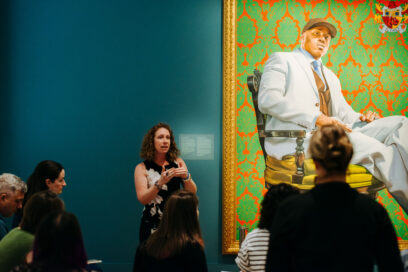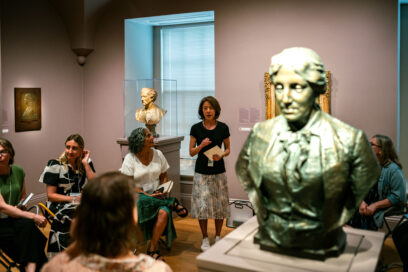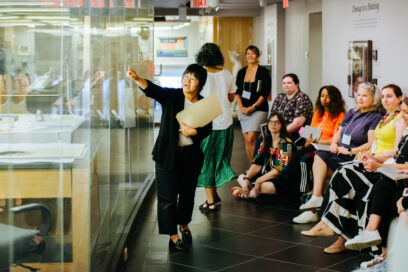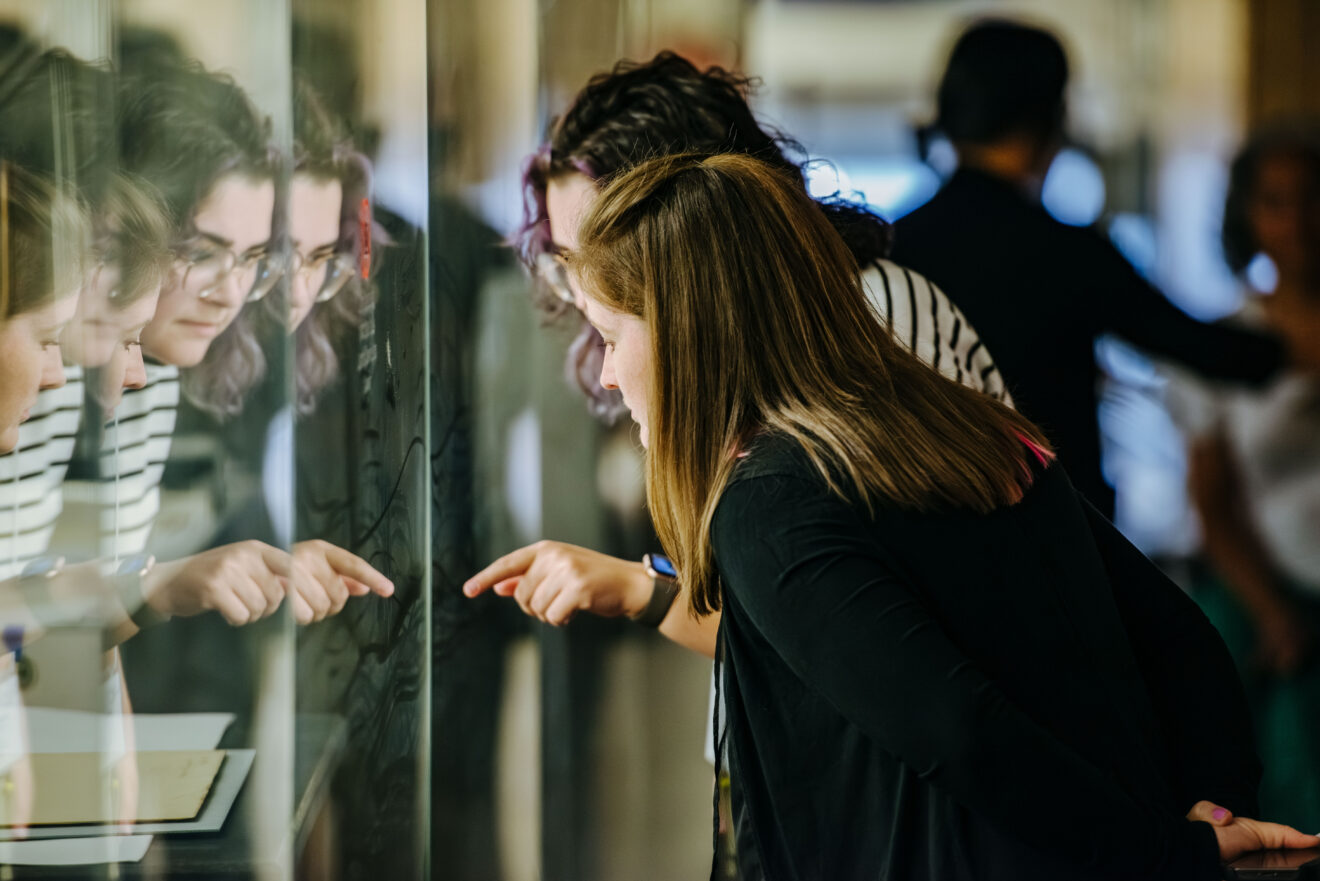“What is a portrait? Do you already use portraiture in the classroom? How do you use it?” These are generally the first three questions I will ask at the beginning of any professional development workshop I facilitate on behalf of the National Portrait Gallery. More often than not, I hear a portrait is a painting of a person (true, but also many other types of mediums are used to create portraits), and a portrait is a way to connect a face with a name (also true). But portraiture is so much more than that.


Get started with these Elements of Portrayal questions:
- Facial expression: Use adjectives to describe the subject’s facial expression. What emotion(s) does this expression convey?
- Pose: Describe the subject’s pose. What does it communicate about this individual?
- Clothing: What clothing is the subject wearing? What might clothing reveal about the individual’s profession, personality, social status or place in history?
- Hairstyle: Describe the subject’s hairstyle. What does it reveal about their age and/or the period in which they lived?
- Setting: What is the portrait’s setting and what might it tell us about the subject? Consider whether the setting is real or imagined and what that might mean.
- Objects: Which objects are represented in this portrait? Objects often function as symbols. What might they reveal about the subject?
- Color: What tone or mood does color convey in this portrait?
- Medium: What is the medium of this portrait? How does the medium both help determine the era in which the portrait was made and affect your interpretation of the portrait?
- Scale: How does the scale of this portrait, and how much space the subject within it takes up, influence the way we view them?
- Artistic style: What does this artist’s style suggest about the subject or the era in which the portrait was created?

- Observation skills: Slow down and look closely at what you see. Focus only on what you can actually see. Avoid interpretation. To give it a try, visit Explore at the National Portrait Gallery.
- Critical thinking: After initial observation, analyzing portraits encourages critical thinking and interpretation. This enhances students’ analytical skills and ability to interpret visual information. Try it out with Let’s Solve a Mystery: George Washington.
- Relevance: Chances are, all students have had a portrait made: their class picture! Why not ask students: Have you ever had your portrait made? What would you include in your portrait? What do you want the portrait to say about you? We often say that when our visitors walk into the Portrait Gallery, we want them to see themselves on the walls. What do I mean by that? What is more accessible to one person than to see another person? Portraits meet us where we are.
- Historical context: Portraits provide a glimpse into the past. They can serve as a springboard for discussions about history, societal changes and the lives of individuals from various time periods. In addition, we can use the historical context of a portrait to connect to what is happening in our world today. Check out our Expanding Roles of Women curriculum guide.
- Civic engagement: The museum’s collection introduces students to individuals, past and present, whose thoughts and actions have made communities and our nation better. Portraits spark civic participation through conversation, creating agency and inspiring change. Ask: What can you do to make a difference? How can you get involved? For ideas, visit Teaching Through Portraiture: Civic Participation.
- Interdisciplinary learning: Portraiture allows students to explore various disciplines simultaneously. In social studies, they can study the historical context of the portrait, while in English, they can analyze the biography of the subject, and in visual arts, they can learn about artistic techniques and styles. This interdisciplinary approach can help students see the connections between different subjects. For an example of how portraits can be used as an interdisciplinary teaching tool, visit Be the Curator resources.
- Cultural understanding and inclusivity: Portraits provide an opportunity to discuss different cultures, histories and social contexts. This can lead to important conversations about diversity and inclusion in whose story is told and not told history. By using portraiture, teachers can promote inclusivity by featuring subjects from diverse backgrounds, including those historically underrepresented. This sends a powerful message about the importance of representation. Consider the depth and breadth of the Portrait Gallery’s holdings with our history and heritage month collections.
- Perspective-taking and empathy: Portraits are mirrors and windows — mirrors because this art form gives us the opportunity to reflect on ourselves and our own identity, and windows because they allow us to explore our shared humanity, both past and present.
- Identity: Our collections present people of remarkable character and achievement. These Americans — artists, politicians, scientists, inventors, activists and performers — form our national identity. They help us understand who we are and remind us of what we can aspire to be. Learn how to connect portraiture and identity.
To get started, visit the National Portrait Gallery’s Reading Portraiture Guide for Educators with tips on spotting visual clues in portraits and then analyzing them, no matter what subject you teach.
Opinions expressed by SmartBrief contributors are their own.
_________________________
Subscribe to SmartBrief’s FREE email newsletter to see the latest hot topics on edtech. It’s among SmartBrief’s more than 250 industry-focused newsletters.
